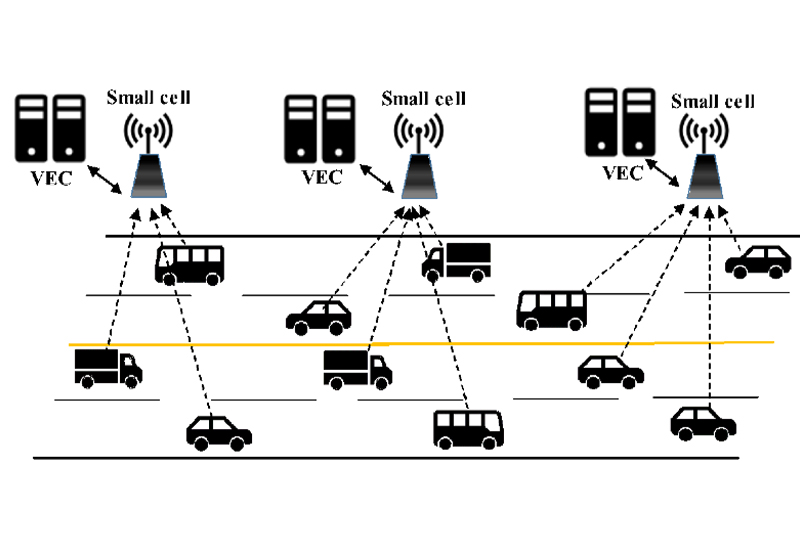
Computing & Communications
Channel Modeling and Transceiver Architectures in Support of High Data Rate Communications in Mobile Environments
The project will examine massive MIMO communication to support the high data rate needs of autonomous driving. Both sub 6 Ghz and mm-Wave communication will be of interest with some preference to mm-Wave communication. The specific aims of our project are: 1) Development and analysis of low complexity receiver and transmitter architectures (mm-Wave) in support of the communication needs. In particular, development of suitable antenna array architectures along with the RF chains topology for rich channel sensing. 2) Novel channel sensing methods that are synergistic with the architectures and development of channel estimation techniques that enable a richer characterization of the communication environment than hitherto possible. 3) Novel channel models to incorporate mobility as well as the development of algorithms to track the channel in mobile environments.

Computing & Communications
Hybrid V2X Architecture and Testbed
The CWC research team is developing an experimental testbed to explore 4G/5G vehicular-to-everything (V2X) communication and network systems. The testbed consists of 3 small-cell base stations, deployed on rooftops on campus and connected to a core-network server. Two experimental vehicles are instrumented and equipped with 4G/5G radios, mounted on the top rack or inside. Each base station and mobile device comprises of two software radios, running at sub-6GHz and millimeter-wave frequencies, respectively. These software radios are programmable from physical layer signal processing all the way up to mobile application layer, thus enabling full-stack experimental research in 4G and 5G.

Computing & Communications
Open configuration options Cellular Vehicle-to-Everything (C-V2X)
The current Cellular Vehicle-to-Everything (C-V2X) Sidelink communication protocol provides a low latency interface for sharing short safety messages among Road-Side Units (RSUs) and On-Board Units (OBUs). However, the protocol is primarily designed for broadcasting small messages and lacks link adaptation capabilities – this project utilizes AI/ML techniques to augment C-V2X Sidelinks with this adaptation capability in order to enable emerging applications such as vehicular sensor fusion.

Computing & Communications
Multi-interface Computation Offloading Strategy in Vehicle-to-Vehicle Competition Environments
Smart vehicles are running various computationally intensive tasks necessary for intelligent and safe driving. To save energy and enhance computational efficiency, mobile edge computing (MEC) provided by 5G networks is essential for future smart transportation. In this regard, our project investigates the problem of task offloading from multiple coexisting smart vehicles to road-side 5G vehicular edge computing (VEC) servers, while trying to capture their joint competitions in channel resource allocation and computational resource allocation.

Computing & Communications
Small-Cells for Connected Vehicles: An Experiment-Driven Exploration
The vision of connected vehicles has stayed in conceptual development stage for years. A main hurdle towards its materialization is limited infrastructure support---the long latency and low throughput of current cellular infrastructure is insufficient to meet the projected application demands in connected vehicles. In this project, we will explore new network architectures and protocols to overcome the performance limitation of the cellular infrastructure for connected vehicles.